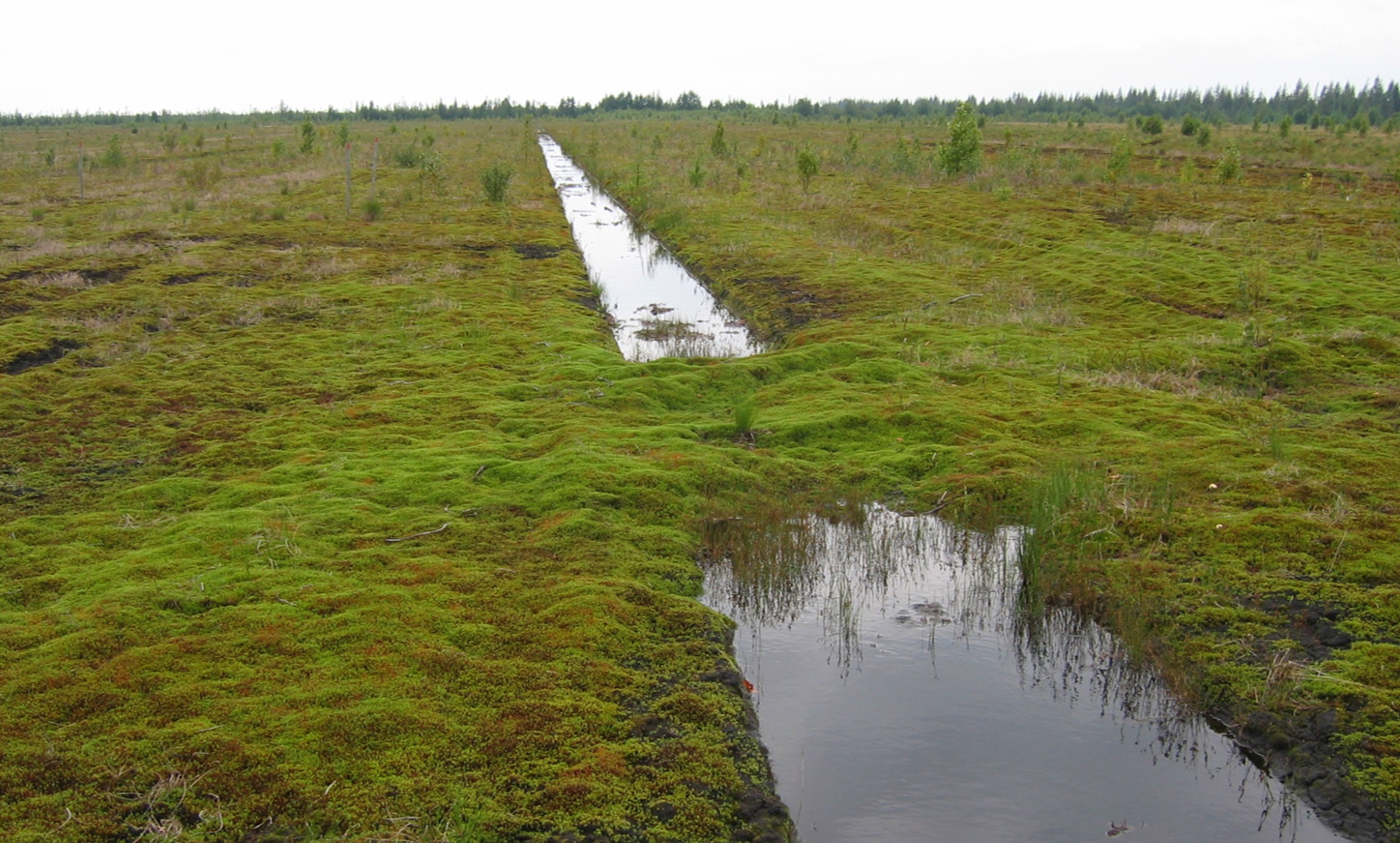Peatlands and wetlands
What is a peatland?
There are many definitions of peatlands, depending on the source:
According to the Guide d’identification et délimitation des milieux humides du Québec méridional, a peatland is a wetland where the production of organic matter, regardless of the composition of the plant remains, prevails over its decomposition, resulting in an accumulation of organic matter in the form of peat. According to the same guide, organic soil is defined as a minimum accumulation of 30 cm of organic matter.
According to the Canadian Wetland Classification System, peatlands should be characterized by a minimum accumulation of 40 cm of organic matter to be classified as such.
There are generally considered to be two main types of peatlands: Sphagnum-dominated peatlands (ombrotrophic peatlands or bogs) and fens (minerotrophic peatlands).
Sphagnum-dominated peatlands are dominated by Sphagnum mosses and ericaceous plants, are acidic, and are fed with water only by precipitation.
Fens are dominated by a diverse assemblage of mosses, sedges, and shrubby species, are more nutrient rich, and are also supplied with water by surface and groundwater runoff.
What is a wetland?
Couillard and Grondin (1986) consider wetlands to be all areas that are saturated with water or flooded for a sufficiently long period of time to influence, to the extent that they are present, the soil or vegetation components.
Wetlands include a wide range of ecosystems such as ponds, marshes, swamps and peatlands.
Importance of peatlands
All peatlands fulfill important functions for fauna, flora, the global climate and human beings.
In particular, they are refuges of biodiversity: according to the Ministère de l'Environnement et de la Lutte contre les changements climatiques, half of the threatened or vulnerable plant and animal species in Quebec are found in wetlands, including four vascular plant species linked exclusively to peatlands (Centre de données sur le patrimoine naturel du Québec).
Peatlands are also important carbon sinks: of all the carbon accumulated in terrestrial ecosystems, one third is in peatlands (UICN Peatlands and climate change 2021).
Unfortunately, on a global scale, peatlands have been widely disturbed. Annually, 5000 km2 of peatlands are reportedly destroyed by humans, which is 10 times faster than the expansion of peatlands during the Holocene (Joosten and Clarke 2002).
Fortunately, restoration methods for peatlands have been developed or are being developed and aim to restore the original ecosystem characteristics. These are based on the principles of ecological restoration, i.e., assisting the regeneration of ecosystems that have been degraded, damaged or destroyed (Society for Ecological Restoration 2004).


